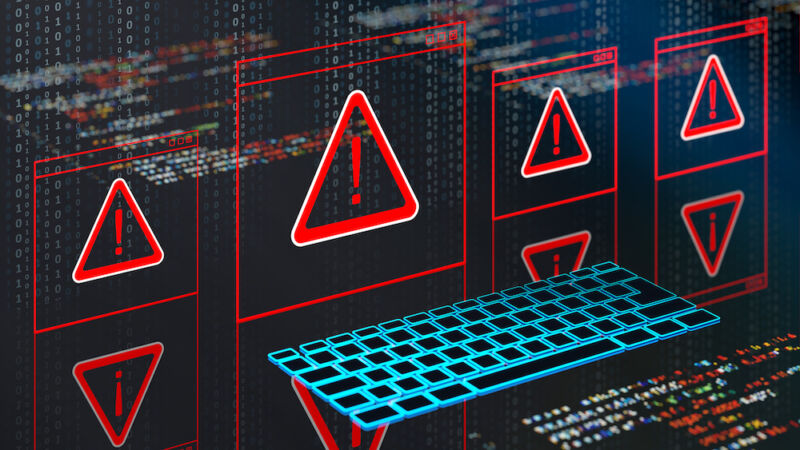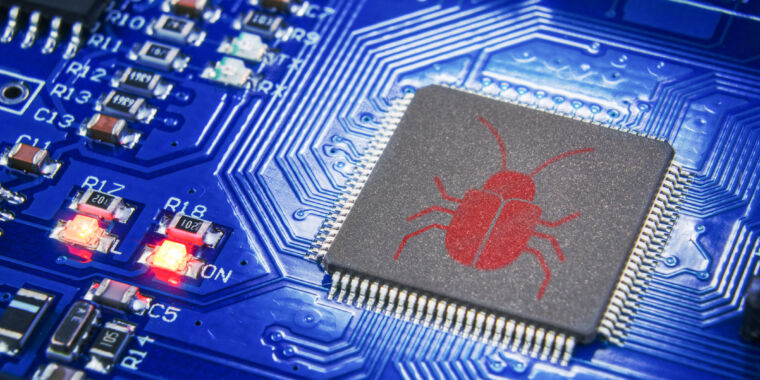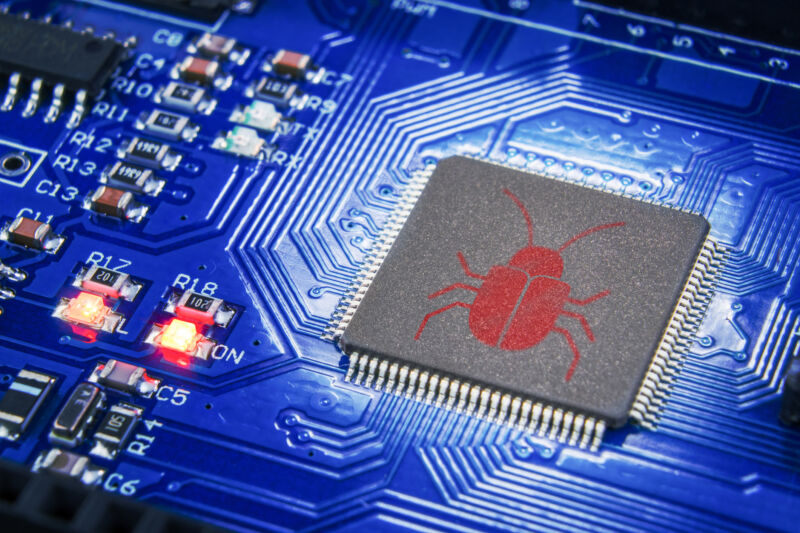
A transparent television might seem like magic, but both LG and Samsung demonstrated such displays this past January in Las Vegas at CES 2024. And those large transparent TVs, which attracted countless spectators peeking through video images dancing on their screens, were showstoppers.
Although they are indeed impressive, transparent TVs are not likely to appear—or disappear—in your living room any time soon. Samsung and LG have taken two very different approaches to achieve a similar end—LG is betting on OLED displays, while Samsung is pursuing microLED screens—and neither technology is quite ready for prime time. Understanding the hurdles that still need to be overcome, though, requires a deeper dive into each of these display technologies.
How does LG’s see-through OLED work?
OLED stands for organic light-emitting diode, and that pretty much describes how it works. OLED materials are carbon-based compounds that emit light when energized with an electrical current. Different compounds produce different colors, which can be combined to create full-color images.
To construct a display from these materials, manufacturers deposit them as thin films on some sort of substrate. The most common approach arranges red-, green-, and blue-emitting (RGB) materials in patterns to create a dense array of full-color pixels. A display with what is known as 4K resolution contains a matrix of 3,840 by 2,160 pixels—8.3 million pixels in all, formed from nearly 25 million red, green, and blue subpixels.
The timing and amount of electrical current sent to each subpixel determines how much light it emits. So by controlling these currents properly, you can create the desired image on the screen. To accomplish this, each subpixel must be electrically connected to two or more transistors, which act as switches. Traditional wires wouldn’t do for this, though: They’d block the light. You need to use transparent (or largely transparent) conductive traces.
 LG’s demonstration of transparent OLED displays at CES 2024 seemed almost magical. Ethan Miller/Getty Images
LG’s demonstration of transparent OLED displays at CES 2024 seemed almost magical. Ethan Miller/Getty Images
A display has thousands of such traces arranged in a series of rows and columns to provide the necessary electrical connections to each subpixel. The transistor switches are also fabricated on the same substrate. That all adds up to a lot of materials that must be part of each display. And those materials must be carefully chosen for the OLED display to appear transparent.
The conductive traces are the easy part. The display industry has long used indium tin oxide as a thin-film conductor. A typical layer of this material is only 135 nanometers thick but allows about 80 percent of the light impinging on it to pass through.
The transistors are more of a problem, because the materials used to fabricate them are inherently opaque. The solution is to make the transistors as small as you can, so that they block the least amount of light. The amorphous silicon layer used for transistors in most LCD displays is inexpensive, but its low electron mobility means that transistors composed of this material can only be made so small. This silicon layer can be annealed with lasers to create low-temperature polysilicon, a crystallized form of silicon, which improves electron mobility, reducing the size of each transistor. But this process works only for small sheets of glass substrate.
Faced with this challenge, designers of transparent OLED displays have turned to indium gallium zinc oxide (IGZO). This material has high enough electron mobility to allow for smaller transistors than is possible with amorphous silicon, meaning that IGZO transistors block less light.
These tactics help solve the transparency problem, but OLEDs have some other challenges. For one, exposure to oxygen or water vapor destroys the light-emissive materials. So these displays need an encapsulating layer, something to cover their surfaces and edges. Because this layer creates a visible gap when two panels are placed edge to edge, you can’t tile a set of smaller displays to create a larger one. If you want a big OLED display, you need to fabricate a single large panel.
The result of even the best engineering here is a “transparent” display that still blocks some light. You won’t mistake LG’s transparent TV for window glass: People and objects behind the screen appear noticeably darker than when viewed directly. According to one informed observer, the LG prototype appears to have 45 percent transparency.
How does Samsung’s magical MicroLED work?
For its transparent displays, Samsung is using inorganic LEDs. These devices, which are very efficient at converting electricity into light, are commonplace today: in household lightbulbs, in automobile headlights and taillights, and in electronic gear, where they often show that the unit is turned on.
In LED displays, each pixel contains three LEDs, one red, one green, and one blue. This works great for the giant digital displays used in highway billboards or in sports-stadium jumbotrons, whose images are meant to be viewed from a good distance. But up close, these LED pixel arrays are noticeable.
TV displays, on the other hand, are meant to be viewed from modest distances and thus require far smaller LEDs than the chips used in, say, power-indicator lights. Two years ago, these “microLED” displays used chips that were just 30 by 50 micrometers. (A typical sheet of paper is 100 micrometers thick.) Today, such displays use chips less than half that size: 12 by 27 micrometers.
 While transparent displays are stunning, they might not be practical for home use as televisions. Expect to see them adopted first as signage in retail settings. AUO
While transparent displays are stunning, they might not be practical for home use as televisions. Expect to see them adopted first as signage in retail settings. AUO
These tiny LED chips block very little light, making the display more transparent. The Taiwanese display maker AUO recently demonstrated a microLED display with more than 60 percent transparency.
Oxygen and moisture don’t affect microLEDs, so they don’t need to be encapsulated. This makes it possible to tile smaller panels to create a seamless larger display. And the silicon coating on such small panels can be annealed to create polysilicon, which performs better than IGZO, so the transistors can be even smaller and block less light.
But the microLED approach has its own problems. Indeed, the technology is still in its infancy, with costing a great deal to manufacture and requiring some contortions to get uniform brightness and color across the entire display.
For example, individual OLED materials emit a well-defined color, but that’s not the case for LEDs. Minute variations in the physical characteristics of an LED chip can alter the wavelength of light it emits by a measurable—and noticeable—amount. Manufacturers have typically addressed this challenge by using a binning process: They test thousands of chips and then group them into bins of similar wavelengths, discarding those that don’t fit the desired ranges. This explains in part why those large digital LED screens are so expensive: Many LEDs created for their construction must be discarded.
But binning doesn’t really work when dealing with microLEDs. The tiny chips are difficult to test and are so expensive that costs would be astronomical if too many had to be rejected.
 Though you can see through today’s transparent displays, they do block a noticeable amount of light, making the background darker than when viewed directly. Tekla S. Perry
Though you can see through today’s transparent displays, they do block a noticeable amount of light, making the background darker than when viewed directly. Tekla S. Perry
Instead, manufacturers test microLED displays for uniformity after they’re assembled, then calibrate them to adjust the current applied to each subpixel so that color and brightness are uniform across the display. This calibration process, which involves scanning an image on the panel and then reprogramming the control circuitry, can sometimes require thousands of iterations.
Then there’s the problem of assembling the panels. Remember those 25 million microLED chips that make up a 4K display? Each must be positioned precisely, and each must be connected to the correct electrical contacts.
The LED chips are initially fabricated on sapphire wafers, each of which contains chips of only one color. These chips must be transferred from the wafer to a carrier to hold them temporarily before applying them to the panel backplane. The Taiwanese microLED company PlayNitride has developed a process for creating large tiles with chips spaced less than 2 micrometers apart. Its process for positioning these tiny chips has better than 99.9 percent yields. But even at a 99.9 percent yield, you can expect about 25,000 defective subpixels in a 4K display. They might be positioned incorrectly so that no electrical contact is made, or the wrong color chip is placed in the pattern, or a subpixel chip might be defective. While correcting these defects is sometimes possible, doing so just adds to the already high cost.
 Samsung’s microLED technology allows the image to extend right up to the edge of the glass panel, making it possible to create larger displays by tiling smaller panels together. Brendan Smialowski/AFP/Getty Images
Samsung’s microLED technology allows the image to extend right up to the edge of the glass panel, making it possible to create larger displays by tiling smaller panels together. Brendan Smialowski/AFP/Getty Images
Could MicroLEDs still be the future of flat-panel displays? “Every display analyst I know believes that microLEDs should be the ‘next big thing’ because of their brightness, efficiency, color, viewing angles, response times, and lifetime, “ says Bob Raikes, editor of the 8K Monitor newsletter. “However, the practical hurdles of bringing them to market remain huge. That Apple, which has the deepest pockets of all, has abandoned microLEDs, at least for now, and after billions of dollars in investment, suggests that mass production for consumer markets is still a long way off.”
At this juncture, even though microLED technology offers some clear advantages, OLED is more cost-effective and holds the early lead for practical applications of transparent displays.
But what is a transparent display good for?
Samsung and LG aren’t the only companies to have demonstrated transparent panels recently.
AUO’s 60-inch transparent display, made of tiled panels, won the People’s Choice Award for Best MicroLED-Based Technology at the Society for Information Display’s Display Week, held in May in San Jose, Calif. And the Chinese company BOE Technology Group demonstrated a 49-inch transparent OLED display at CES 2024.
These transparent displays all have one feature in common: They will be insanely expensive. Only LG’s transparent OLED display has been announced as a commercial product. It’s without a price or a ship date at this point, but it’s not hard to guess how costly it will be, given that nontransparent versions are expensive enough. For example, LG prices its top-end 77-inch OLED TV at US $4,500.
 Displays using both microLED technology [above] and OLED technology have some components in each pixel that block light coming from the background. These include the red, green, and blue emissive materials along with the transistors required to switch them on and off. Smaller components mean that you can have a larger transmissive space that will provide greater transparency. Illustration: Mark Montgomery; Source: Samsung
Displays using both microLED technology [above] and OLED technology have some components in each pixel that block light coming from the background. These include the red, green, and blue emissive materials along with the transistors required to switch them on and off. Smaller components mean that you can have a larger transmissive space that will provide greater transparency. Illustration: Mark Montgomery; Source: Samsung
Thanks to seamless tiling, transparent microLED displays can be larger than their OLED counterparts. But their production costs are larger as well. Much larger. And that is reflected in prices. For example, Samsung’s nontransparent 114-inch microLED TV sells for $150,000. We can reasonably expect transparent models to cost even more.
Seeing these prices, you really have to ask: What are the practical applications of transparent displays?
Don’t expect these displays to show up in many living rooms as televisions. And high price is not the only reason. After all, who wants to see their bookshelves showing through in the background while they’re watching Dune? That’s why the transparent OLED TV LG demonstrated at CES 2024 included a “contrast layer”—basically, a black cloth—that unrolls and covers the back of the display on demand.
Transparent displays could have a place on the desktop—not so you can see through them, but so that a camera can sit behind the display, capturing your image while you’re looking directly at the screen. This would help you maintain eye contact during a Zoom call. One company—Veeo—demonstrated a prototype of such a product at CES 2024, and it plans to release a 30-inch model for about $3,000 and a 55-inch model for about $8,500 later this year. Veeo’s products use LG’s transparent OLED technology.
Transparent screens are already showing up as signage and other public-information displays. LG has installed transparent 55-inch OLED panels in the windows of Seoul’s new high-speed underground rail cars, which are part of a system known as the Great Train eXpress. Riders can browse maps and other information on these displays, which can be made clear when needed for passengers to see what’s outside.
LG transparent panels have also been featured in an E35e excavator prototype by Doosan Bobcat. This touchscreen display can act as the operator’s front or side window, showing important machine data or displaying real-time images from cameras mounted on the vehicle. Such transparent displays can serve a similar function as the head-up displays in some aircraft windshields.
And so, while the large transparent displays are striking, you’ll be more likely to see them initially as displays for machinery operators, public entertainment, retail signage, and even car windshields. The early adopters might cover the costs of developing mass-production processes, which in turn could drive prices down. But even if costs eventually reach reasonable levels, whether the average consumer really want a transparent TV in their home is something that remains to be seen—unlike the device itself, whose whole point is not to be.
Reference: https://ift.tt/0Jq7r1f






 This early version of the Hover flying camera generated a lot of initial excitement, but never fully took off.Zero Zero Robotics
This early version of the Hover flying camera generated a lot of initial excitement, but never fully took off.Zero Zero Robotics





 Perceptive’s handheld optical coherence tomography imager scans for tooth decay.Perceptive
Perceptive’s handheld optical coherence tomography imager scans for tooth decay.Perceptive Perceptive’s imager can create detailed 3D maps of the insides of teeth.Perceptive
Perceptive’s imager can create detailed 3D maps of the insides of teeth.Perceptive The robot is mechanically coupled to your mouth for movement compensation.Perceptive
The robot is mechanically coupled to your mouth for movement compensation.Perceptive The robot is still in the prototype phase but could be available within a few years.Perceptive
The robot is still in the prototype phase but could be available within a few years.Perceptive Perceptive has successfully used its robot on real human patients, as shown in this sped-up footage. In reality the robot moves slightly slower than a human dentist.Perceptive
Perceptive has successfully used its robot on real human patients, as shown in this sped-up footage. In reality the robot moves slightly slower than a human dentist.Perceptive

 Prof. Vijay Raghunathan, one of the architects of the online Master’s Degree in Microelectronics and Semiconductors at Purdue.Purdue University
Prof. Vijay Raghunathan, one of the architects of the online Master’s Degree in Microelectronics and Semiconductors at Purdue.Purdue University A researcher adjusts imaging equipment in a lab in Birck Nanotechnology Center, home to Purdue’s advanced research and development on semiconductors and other technology at the atomic scale.Rebecca Robiños/Purdue University
A researcher adjusts imaging equipment in a lab in Birck Nanotechnology Center, home to Purdue’s advanced research and development on semiconductors and other technology at the atomic scale.Rebecca Robiños/Purdue University





 LG’s demonstration of transparent OLED displays at CES 2024 seemed almost magical. Ethan Miller/Getty Images
LG’s demonstration of transparent OLED displays at CES 2024 seemed almost magical. Ethan Miller/Getty Images While transparent displays are stunning, they might not be practical for home use as televisions. Expect to see them adopted first as signage in retail settings. AUO
While transparent displays are stunning, they might not be practical for home use as televisions. Expect to see them adopted first as signage in retail settings. AUO Though you can see through today’s transparent displays, they do block a noticeable amount of light, making the background darker than when viewed directly. Tekla S. Perry
Though you can see through today’s transparent displays, they do block a noticeable amount of light, making the background darker than when viewed directly. Tekla S. Perry Samsung’s microLED technology allows the image to extend right up to the edge of the glass panel, making it possible to create larger displays by tiling smaller panels together. Brendan Smialowski/AFP/Getty Images
Samsung’s microLED technology allows the image to extend right up to the edge of the glass panel, making it possible to create larger displays by tiling smaller panels together. Brendan Smialowski/AFP/Getty Images















